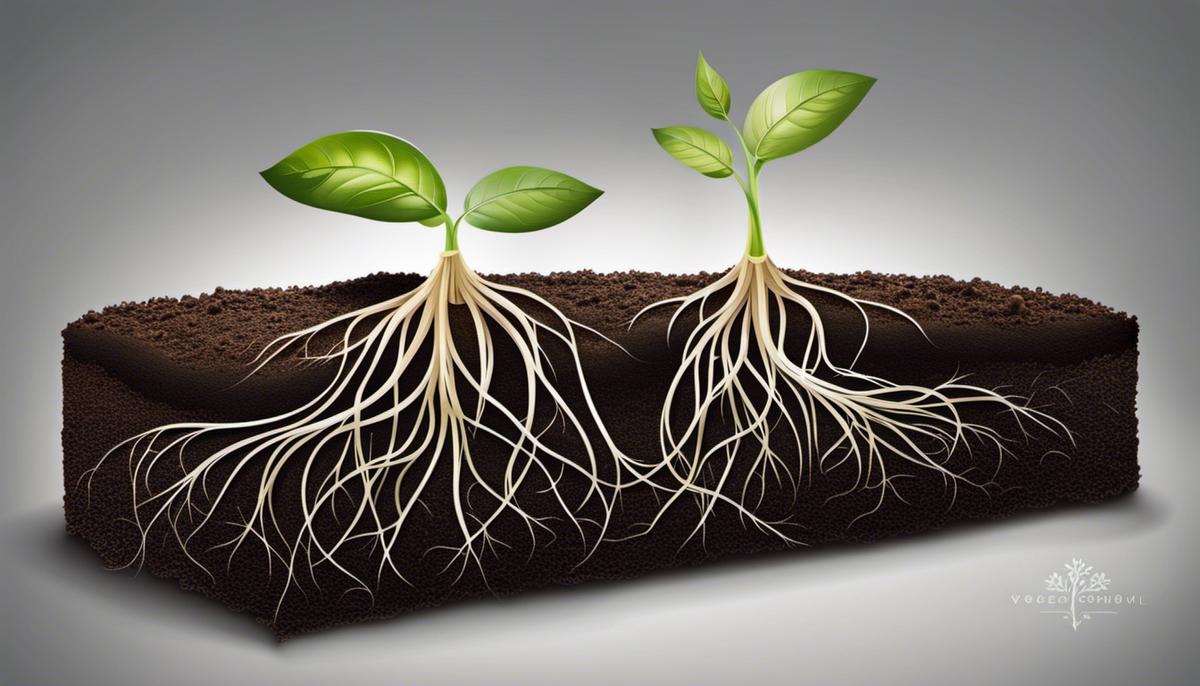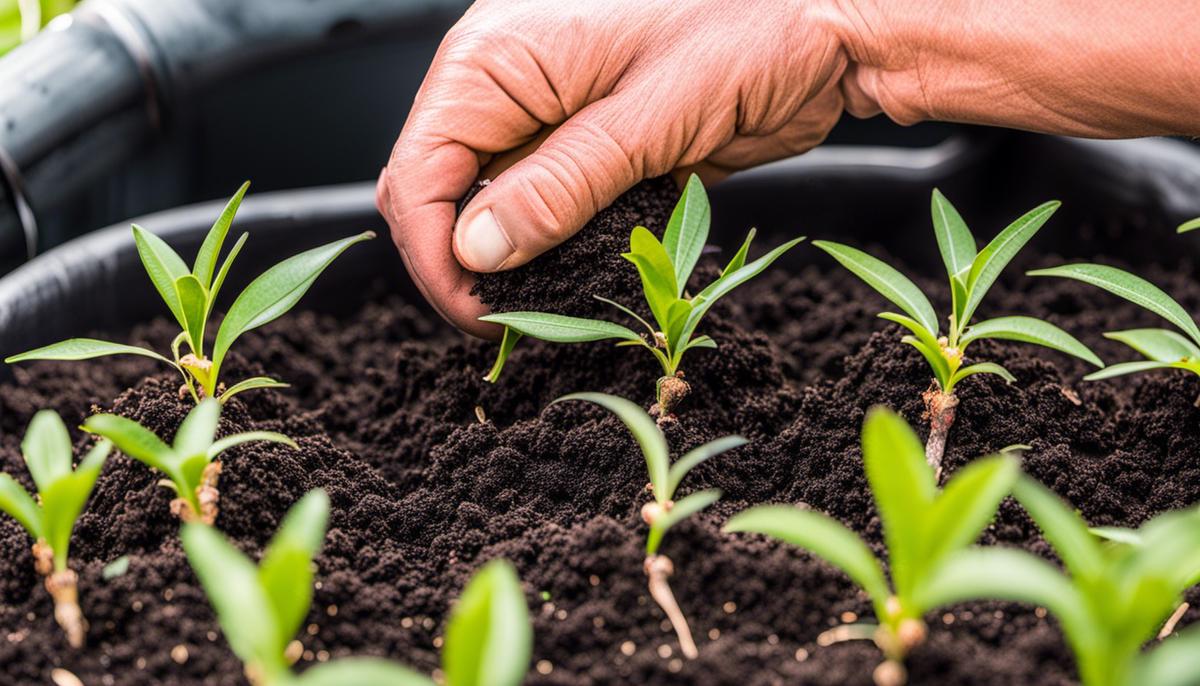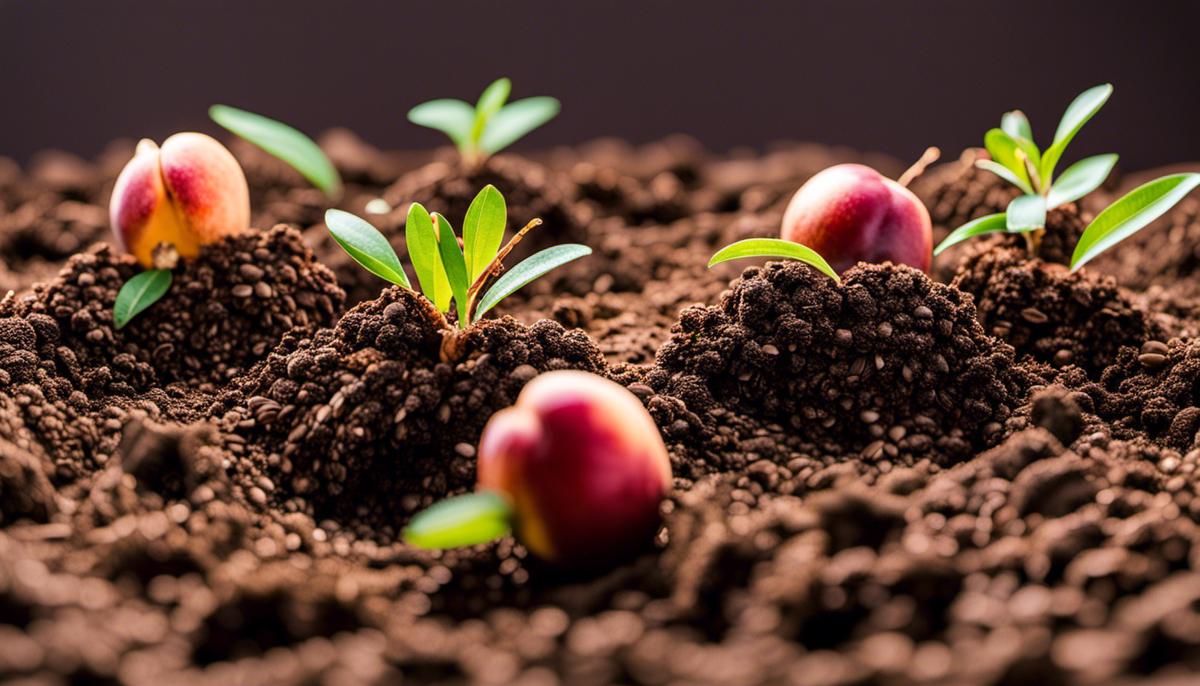Embarking on the journey of growing nectarine from seed into a thriving, fruit-bearing tree is an exciting endeavor that requires a blend of knowledge, skill, and patience. This fascinating voyage begins with appreciating the unique properties of the nectarine seed and its specific growth needs.
As we delve into the art and science of nurturing this unassuming seed, we will explore fundamental topics such as the ideal conditions and precise timing for successful planting, as well as the intricate requirements for germination.
Furthermore, we will offer insights into transplanting the germinated seeds and ensuring their ongoing health through suitable care routines and preventive measures. Read on as we guide you through the intricacies of this rewarding process and equip you with the knowledge to succeed.
Understanding Growing Nectarine From Seeds
Understanding Nectarine Seeds
Primarily, it’s important to know that nectarine seeds are dormant and require stratification before they begin to germinate. Stratification is a process where seeds are subjected to cold and moist conditions to break their dormancy. This can be mimicked by placing the seed in the refrigerator.
Nectarine seeds are bigger than a typical fruit seed and have a hard, protective outer shell. This shell needs to be cracked open before planting to allow for the sprout to grow. However, there are also some nectarine varieties whose seeds do not need cracking open – they merely need to be kept in moist conditions to germinate.
Knowing When Nectarine Seeds Are Ready for Planting
Nectarine seeds are mature and ready for planting when the nectarine fruit is ripe. This is usually during late summer. After removing the seed, wash off any remaining pulp, air dry them for a few days, and then peel off the hard outer endocarp. Some people plant the whole stone directly and let nature takes its course, while others choose to crack open the stone to get to the actual seed inside.
Growing Conditions and Nutritional Needs for Nectarines
Nectarine trees enjoy full sun and well-draining soil. While they’re slightly more tolerant of diverse soil types than some other fruit trees, they prefer slightly acidic conditions. The plant also prefers a constant supply of moisture, but should never sit in stagnant or soggy conditions.
Nectarines are particularly susceptive to fungal diseases and hence it’s advisable to plant them in a location offering good air circulation. A hearty application of natural compost in spring provides essential nutrients, followed by mulching in summer to retain soil moisture and inhibit weed growth.
Young trees require a lot of nitrogen, phosphorus, and potassium for healthy growth. Later on, these nutrients are required less frequently, but the tree will rely more on zinc, manganese, and iron. These can be obtained from compost, manure, and commercial fertilizers.
Understanding the Varieties of Nectarines and their Climate Needs
Different varieties of nectarines thrive in different climates. Most nectarine trees are self-fertile, but they need a certain number of chill hours – hours of temperature below 45 degrees F – to produce fruit. The chill requirements can vary significantly between varieties, so it’s crucial to select a variety suited to your local climate.
Freestone nectarines thrive in warmer regions as they require more chill hours, typically between 650 to 900 hours. Clingstone nectarines have lower chill requirements, around 200 to 300 hours, and are therefore suitable for milder climates.
For most nectarines, the optimal growing temperature once established is between 75 – 85 degrees F. Anything over 95 degrees F can damage the tree and harm fruit production. So, based on your climate, choosing the right variety can make your endeavor much more successful.

Steps to Germinating Nectarine Seeds
Understanding Germination and Stratification
Germination is the biological process in which a seed sprouts and develops into a plant, a crucial first step in growing nectarine from seed. The nectarine seed requires certain conditions to successfully germinate, and one of these is stratification. Stratification is a method that simulates winter-like conditions to encourage germination. This is achieved by exposing the seeds to a cold and moist environment for a specific period and is particularly important for nectarine seeds, which are naturally exposed to such conditions in the wild.
Steps to Stratify Nectarine Seeds
Begin the process of stratification by first washing the nectarine seeds to remove any remaining pulp. Then, wrap the seeds in a moist paper towel, and place them inside a plastic bag or container. Store this bag in a refrigerator with a steady temperature of 33 to 41 degrees Fahrenheit. This cold treatment needs to last for about 60 to 90 days, simulating the chilling effect of winter. Regularly check on the seeds during this time to ensure the paper towel remains moist and to check for any signs of mold.
Creating the Right Environment for Germination
Once 60 to 90 days have passed, the nectarine seeds are ready to be planted. Select a pot with good drainage, as too much water can cause the seed to rot. Fill the pot with a soil mixture made up of equal parts potting soil and perlite, which will ensure the soil is well-draining and yet can retain sufficient moisture for the seed.
Planting and Watering Nectarine Seeds
Place the stratified seed in the pot and cover it with about 1 to 2 inches of the soil mixture. Water the soil until it’s thoroughly moist but not waterlogged. Maintain this consistent moisture level throughout the germination process; letting the soil dry out can stop the germination process.
Requirements for Growth
Once planted, keep the pot in a location with a temperature ranging from 70 to 85 degrees Fahrenheit. The warmer temperature will encourage the seed to sprout.
Germination time for nectarine seeds can vary from one to three months. Patience is key during this period. Keep the pot in a sunny location and continue to water regularly. Once your nectarine seed sprouts, it’s important to ensure that it receives a minimum of six hours of direct sunlight daily to grow properly. Maintain a regular watering routine and monitor the plant’s growth. With the right care, your nectarine seed will grow into a luscious and fruit-producing tree.

Transplanting and Ongoing Care
Transplanting Germinated Nectarine Seeds
Germinated nectarine seeds should be carefully transferred into a larger planting area when they reach about 2-3 inches in height. Before transplanting, prepare a pot with a good-sized drainage hole, filling it two-thirds full with a mix of nutrient-rich soil and compost. Create a small hole in the center for the seed.
Carefully remove the seedling from its initial container, being cautious not to harm the root system. Gently place the young plant into the hole in the new pot, lightly packing soil around the base to secure it. Water thoroughly, making sure moisture is evenly dispersed throughout the pot without causing waterlogging.
Ongoing Watering and Nutrient Care
Nectarine trees prefer deep, infrequent watering rather than regular light sprinkling. Keep the soil moist but not soggy, watering only when the top inch of soil begins to feel dry to the touch. Overwatering can lead to root rot and other diseases.
Nutrient care is equally important. Feed your growing nectarine tree with a balanced fertilizer during the growing season to ensure it receives the necessary nutrients. Mulching around the base of the tree can also help retain moisture and provide additional nutrients as it decomposes.
Pruning and Pests Management
Pruning is essential to shape your tree, promote further growth, and ensure healthy fruit production. During the tree’s dormant winter period, prune any dead wood and thin out branches to improve air circulation and sunlight exposure.
Pests and diseases can pose serious threats to nectarine trees. Regularly inspect your tree for any signs of pests, such as aphids or borers, or diseases like peach leaf curl. If detected, use appropriate treatments or seek expert advice promptly.
Flowering, Fruiting, and Harvest
Your nectarine tree will typically start to produce blossoms in its third or fourth year. The blossoms will eventually develop into nectarines if well-pollinated. The timing of fruiting can depend on various factors like care, climate, and variety, but you can usually expect fruit in the late summer months.
The first harvest should come between the third and sixth year after planting. The fruit is ripe when it gives slightly to gentle pressure and has a sweet aroma. It’s important to note that nectarines mature quickly, so frequent checking is needed to harvest the fruit at its prime.

Troubleshooting Common Problems
Problem: Difficulty in Germinating Nectarine Seeds
One of the most common pitfalls in growing nectarines from seeds is the failure of the seeds to germinate or sprout. This can often be due to improper stratification—a process where you simulate the winter conditions a seed would naturally experience out in the wild, a necessary step for a nectarine seed to germinate. You can overcome this by storing the seed in the refrigerator for about 2-3 months at a temperature of about 33-41 degrees Fahrenheit.
Problem: Diseases and Pests
Nectarine trees are prone to a handful of diseases such as Peach Leaf Curl and bacterial canker which can result in shrunken, discolored fruits and dieback of branches. Regular pruning and the use of appropriate fungicides can alleviate these problems. In terms of pests, aphids, red spider mites, and peach tree borers are common adversaries. Regularly inspect your trees for damage signs and consider introducing natural predators to control pests. Chemical pesticides can be used as a last resort, but always follow the directions on the product label.
Problem: Nutrient Deficiencies
Nectarine trees require a balance of nutrients in their soil. They can suffer from deficiencies of nitrogen, phosphorus, and potassium – the primary nutrients needed by most plants. Yellowing leaves might signify a nitrogen deficiency, while a purplish-red color might indicate a phosphorus shortage, and weak growth or smaller fruit could be a sign of insufficient potassium. In most cases, a balanced fertilizer can correct these deficiencies—just be sure to follow label directions so you don’t over- or under-apply.
Problem: Insufficient Water and Sunlight
Nectarine trees need full sun and regular watering to bear fruit. A lack of either can reduce yield or even kill the tree. Avoid planting your tree where buildings or other trees will shade it, especially during the morning when dew needs to burn off to prevent fungal diseases. Additionally, while established nectarine trees can handle periods of dryness, newly planted or young trees need consistent, deep watering.
Problem: Pruning Issues
Pruning is necessary to maintain a balanced and healthy tree, but incorrect pruning can lead to issues. Excessive, incorrect pruning can shock the tree, leading to weakened health and reduced fruiting. Ensure you’re making clean cuts, removing dead or diseased wood first, and promoting a balanced, open canopy for sun and air circulation.
By understanding and addressing these common problems, you can significantly increase your success in growing nectarine trees from seeds and enjoy the sweet rewards your mature tree will offer.

Through a comprehensive understanding of nectarines and their seeds, mastering the art of germination, and perfecting practices in transplanting and ongoing care, you’ll be well on your way to growing healthy, fruitful nectarine trees in no time.
Troubleshooting any obstacles that might come your way is just as integral to the journey. Armed with the knowledge of how to prevent and combat common diseases and pest-related damages, you’ll be able to promote the longevity and vitality of your trees.
Here’s to your fruitful venture into growing nectarines from seeds, may it bring you not only a juicy sweet harvest but also the unparalleled joy of nurturing life from seed to tree.






